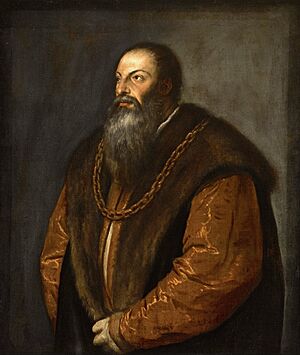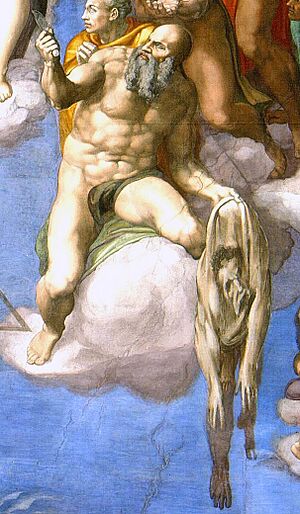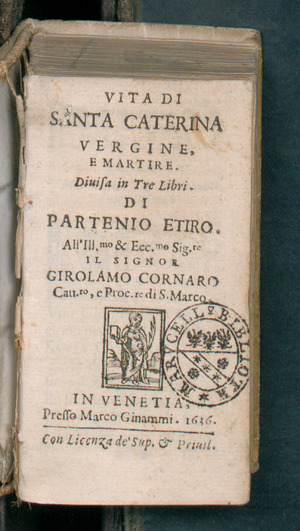Pietro Aretino facts for kids
Quick facts for kids
Pietro Aretino
|
|
|---|---|

Pietro Aretino, by Titian (Frick Collection)
|
|
| Born | 19 or 20 April 1492 Arezzo, Republic of Florence (present-day Tuscany, Italy) |
| Died | 21 October 1556 (aged 64) Venice, Republic of Venice (present-day Veneto, Italy) |
| Occupation |
|

Pietro Aretino (born April 19 or 20, 1492 – died October 21, 1556) was a famous Italian writer. He was a playwright, poet, and especially known for his sharp and witty satire. Satire is a way of using humor, irony, or exaggeration to criticize people or ideas.
Pietro Aretino was very influential in his time. He often wrote about art and politics. He was also known for speaking out against powerful people. Because of his writings, he was sometimes called "the Scourge of Princes." This means he was like a whip or a punishment for princes and powerful leaders.
Contents
Life of Pietro Aretino
Pietro Aretino was born in Arezzo, a city in Tuscany, Italy. His father was a shoemaker named Luca Del Tura. His mother was Margherita, also known as Tita, Bonci. Pietro never used his father's name. Instead, he took the name Aretino, which means "from Arezzo."
Pietro spent about ten years in a city called Perugia. After that, he moved to Rome. In Rome, a wealthy banker and art supporter named Agostino Chigi helped him. Chigi was also a patron of the famous artist Raphael.
Becoming a Famous Satirist
Pietro Aretino became very famous for his writing. A big moment in his career happened in 1516. This was when Hanno, the pet elephant of Pope Leo X, died. Aretino wrote a funny and critical pamphlet called "The Last Will and Testament of the Elephant Hanno."
This pamphlet made fun of important political and religious figures in Rome. Even Pope Leo X himself was mocked. The pamphlet was a huge success. It launched Aretino's career and made him known as a brilliant satirist.
Aretino continued to write sharp and witty pieces. He often criticized the gossip and politics of the time. He turned simple Roman jokes into powerful tools of satire.
Moving to Venice
After Pope Leo X died in 1521, Aretino looked for new supporters. He worked with different noblemen in northern Italy. He was known for his cleverness and bold writing.
In 1527, he settled permanently in Venice. Venice was a city known for its independence. Aretino liked Venice because it was a place where he could speak freely. He even called it "the seat of all vices" with a smile.
Pietro Aretino's Writings
Pietro Aretino wrote many different types of works. He wrote plays and religious texts. But he is most remembered for his letters. These letters were full of clever writing. They could praise someone or criticize them sharply.
His letters were shared widely. He collected them and published them over time. This made him very famous, but it also created many enemies. His critical writing earned him the nickname "scourge of princes."
After Aretino died, his books were listed in the papal Index Librorum Prohibitorum. This was a list of books that the Catholic Church banned.
Plays by Aretino
One of his famous plays is La cortigiana. This play is a funny parody of another famous book, Il Cortegiano. That book taught people how to be a perfect courtier (someone who serves a king or queen).
In Aretino's play, a man named Messer Maco goes to Rome to become a cardinal. A trickster teaches him how to act like a courtier. He learns to trick people and flatter them. He also learns to spend hours looking in the mirror.
Pietro Aretino in Art
Pietro Aretino was a close friend of the famous painter Titian. Titian painted Aretino's portrait three times. One portrait from 1527 is in the Kunstmuseum Basel. Another from 1537 is in the Frick Collection. A third portrait from 1545 is in the Palazzo Pitti.
Many other artists also painted or sculpted Aretino. He was one of the most portrayed celebrities of his time. His image appeared in paintings, sculptures, and prints. Artists like Sebastiano del Piombo, Alessandro Moretto, and Jacopo Tintoretto all created his portrait.
Works
Poetry
- Marfisa (published 1532, 1535)
- Angelica (published 1536)
- Orlandino (published 1540)
- Astolfeida (published c. 1547)
Prose
- Lettere (Letters)
- Ragionamenti (also called Sei Giornate) (1534, 1536). These are two Renaissance dialogues. In one, two women discuss life choices for a young girl.
Plays
- Farza
- La cortigiana (1525, 1534). This is a comedy in five acts. It makes fun of the idea of a "perfect courtier."
- Il marescalco (1533). A comedy in five acts.
- La talanta (1542). A comedy in five acts.
- Lo ipocrito (1542). A comedy in five acts.
- Il filosofo (1546). A comedy in five acts.
- L'Orazia (1546). A tragedy written in verse.
See also
 In Spanish: Pietro Aretino para niños
In Spanish: Pietro Aretino para niños



